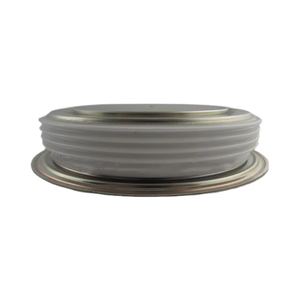Thyristors Online | High-Quality Power Semiconductors
**”The Thyristor Chronicles: A Spark of Genius in the World of Electronics”**
(The Thyristor Defined: A Historical and Technical Overview)
In the vast and ever-evolving landscape of electronics, few components have sparked as much innovation and intrigue as the thyristor. This unassuming yet powerful device has quietly shaped the modern world, from the dimmer switches in your living room to the massive power grids that light up entire cities. But what exactly is a thyristor, and how did it come to be such a pivotal player in the world of technology? Let’s dive into the electrifying story of this remarkable invention.
The thyristor, often referred to as a “silicon-controlled rectifier” (SCR), is a semiconductor device that acts like a switch, but with a twist—it can handle enormous amounts of power. Unlike a regular switch that you flip on and off, the thyristor is a bit more sophisticated. Once it’s triggered, it stays on until the current flowing through it drops to zero. This unique behavior makes it perfect for controlling high-power circuits, and it’s why thyristors are found in everything from motor speed controllers to industrial welding machines.
The story of the thyristor begins in the mid-20th century, a time when the world was hungry for more efficient ways to control electricity. In 1956, a team of engineers at General Electric, led by the brilliant minds of Gordon Hall and Frank “Bill” Gutzwiller, unveiled the first commercially viable thyristor. It was a game-changer. Suddenly, engineers had a reliable and compact way to manage high-power circuits, paving the way for advancements in power electronics that were previously unimaginable.
But the thyristor’s journey didn’t stop there. Over the decades, it evolved and diversified, giving rise to a family of related devices like the TRIAC, DIAC, and GTO (Gate Turn-Off Thyristor). Each of these variants brought new capabilities to the table, expanding the thyristor’s reach into even more applications. Today, thyristors are the unsung heroes behind renewable energy systems, electric vehicles, and even the high-speed trains that whisk us across continents.
What makes the thyristor so fascinating is not just its technical prowess, but also its ability to adapt and thrive in a rapidly changing technological landscape. It’s a testament to human ingenuity—a small piece of silicon that has had an outsized impact on the world. From its humble beginnings in a GE lab to its role in powering the future, the thyristor is a true marvel of engineering.
(The Thyristor Defined: A Historical and Technical Overview)
So, the next time you adjust the brightness of a light or marvel at the efficiency of a modern power grid, take a moment to appreciate the thyristor. It may not be as flashy as a smartphone or as glamorous as a supercomputer, but it’s a quiet powerhouse that has helped shape the world we live in today. And who knows? The next big breakthrough in electronics might just be another spark of genius from the humble thyristor.


